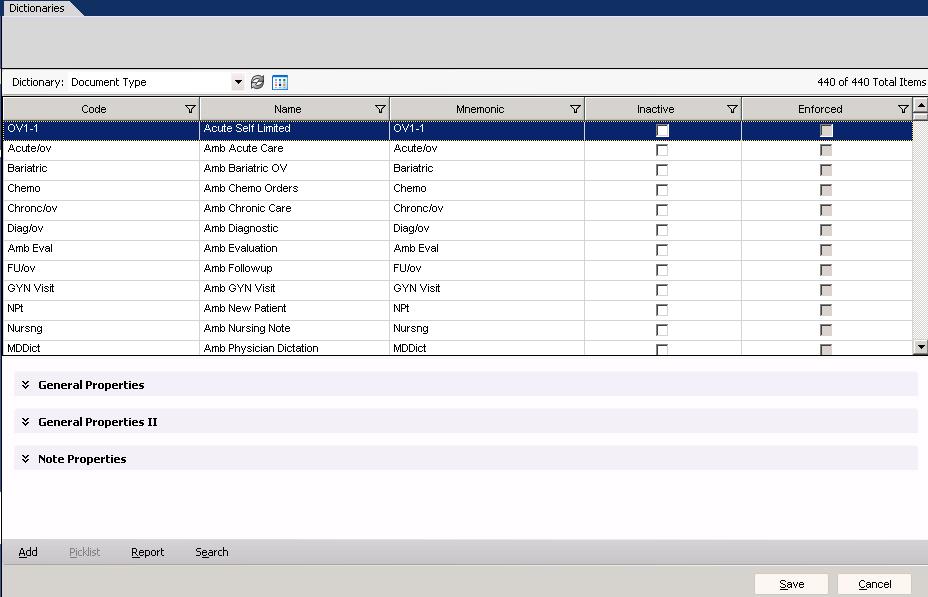Difference between revisions of "Document Type"
| Line 21: | Line 21: | ||
* '''Required Finalization Authority''' - This is a drop-down that indicates the level of authority that is required to finalize the document. | * '''Required Finalization Authority''' - This is a drop-down that indicates the level of authority that is required to finalize the document. | ||
* '''Required Owner Authority''' - This is a drop-down that indicates the level of authority that is required to be an owner of the document. | * '''Required Owner Authority''' - This is a drop-down that indicates the level of authority that is required to be an owner of the document. | ||
| + | * '''Workflow''' - This is a drop-down that determines if a document is to be verified or not. This setting should not be changed once set initially. | ||
| + | ''Electronic Signature (ES)'' = Documents are signed or authenticated using a unique identifier specific to the user in Enterprise, rather than a pen. This is done with the user authentication occurring through re-entry of a user password or biometric authentication.<br> | ||
| + | ''Electronic Verification (EV)'' = An alternative form of authenticating documents within Enterprise without using a pen. EV is used to verify that a user has reviewed a document but is not responsible for the accuracy of its content.<br> | ||
| + | ''Non Electronic (NONEW)'' = No form of electronic authentication needed, or possible since signature or verification is done outside the Enterprise EHR system by printing the document and signing using a pen.<br> | ||
* '''Manifestation''' - Defines the type of document. | * '''Manifestation''' - Defines the type of document. | ||
HTML = v10 Structured Note<br> | HTML = v10 Structured Note<br> | ||
Revision as of 19:22, 9 November 2012
Back to Allscripts Enterprise EHR Dictionaries
Description
The document type dictionary is one of the most used dictionaries in Enterprise EHR. It is where an admin user can create all types of notes (documents, v10, v11, scanned documents, etc). Note properties can also be established from this dictionary.
Document Type Screenshot:

General Properties:

General Properties II:

Note Properties:

Definition
Here are some important pieces of the document type dictionary:
General Properties
- Required Finalization Authority - This is a drop-down that indicates the level of authority that is required to finalize the document.
- Required Owner Authority - This is a drop-down that indicates the level of authority that is required to be an owner of the document.
- Workflow - This is a drop-down that determines if a document is to be verified or not. This setting should not be changed once set initially.
Electronic Signature (ES) = Documents are signed or authenticated using a unique identifier specific to the user in Enterprise, rather than a pen. This is done with the user authentication occurring through re-entry of a user password or biometric authentication.
Electronic Verification (EV) = An alternative form of authenticating documents within Enterprise without using a pen. EV is used to verify that a user has reviewed a document but is not responsible for the accuracy of its content.
Non Electronic (NONEW) = No form of electronic authentication needed, or possible since signature or verification is done outside the Enterprise EHR system by printing the document and signing using a pen.
- Manifestation - Defines the type of document.
HTML = v10 Structured Note
NOTEFORM = v11 Structured Notes
RTF = Document
TIF = Scanned Documents
- Display Note Icon on Schedule - This should be clicked for documents that will be created relating to visits. Scanned documents usually are not checked but HTML, NOTEFORM, and RTF usually would be.
- Mnemonic - This is not required, but it used as a secondary identifier. This does not appear in the product and unless you have another use for it, the recommendation would be to make this the same as the code.
- Note Properties - The Note properties determines the where the Notes are found.
- Is Clinical Summary - Applies to v10 and v11 Note and allows a note output to be considered as a clinical summary
- For more information on Clinical Summaries, refer to our Patient Summaries page